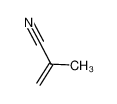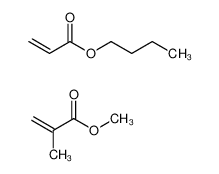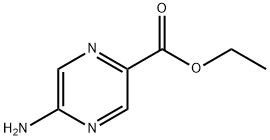Hello, I would like to understand more about what plastic prints are. Are they just fingerprints, or do they carry germs? How long can these prints stay on plastic surfaces, and what risks do they pose for infection? What are the best ways to clean them?
How can we improve the design of plastic materials to reduce microbial adhesion and enhance safety in everyday use?
Related Encyclopedia
Related Products More >
-
- 7446-19-7
- USD 10.0000
- 25kg
-
- 93615-44-2
- Request For Quotation
- 25kg drum
-
- 91082-88-1
- Request For Quotation
- 25kg/Cardboard Drum
-
- 9065-11-6
- Request For Quotation
-
- 9065-11-6
- Request For Quotation
-
- 9065-11-6
- Request For Quotation
-
- 9065-11-6
- Request For Quotation
-
- 9065-11-6
- Request For Quotation





 沪ICP备2021018848号-5
沪ICP备2021018848号-5


Physiologically, the skin’s secretion of sweat and oils is part of the body’s thermoregulation and protective barrier system. When plastic prints are left behind, they can serve as a medium for bacterial growth, potentially harboring pathogens if the surface is touched frequently and not cleaned properly. This may increase the risk of contact transmission of infections, particularly in healthcare or public settings. The stability of plastic surfaces means that these organic residues can persist longer than on more porous materials, leading to sustained contamination.
Clinically, plastic prints can pose a risk for transmission of infectious agents, including bacteria and viruses, if hand hygiene is inadequate. This underscores the importance of regular disinfection of plastic surfaces, especially in environments where vulnerable populations are present. Alternatives like antimicrobial coatings on plastics can reduce microbial survival, but their safety and long-term effects require further study.
For patients or caregivers concerned about hygiene, it is recommended to clean plastic surfaces with appropriate disinfectants regularly and to practice good hand hygiene to minimize health risks. Avoiding unnecessary contact with frequently touched plastic objects can also help reduce exposure.
A big misunderstanding is that all plastic prints are the same—they’re not. The type of print depends on the plastic it’s on: smooth plastics like PET (soda bottles) take ink better than rough or textured plastics, which might need special adhesives. How long the print lasts also varies. Outdoor items (like garden tools) often have UV-resistant prints to avoid fading in the sun, while indoor prints (like on storage bins) might wear off faster if scrubbed too hard.
Another myth is that plastic prints are just for decoration. Sure, they make things look nice, but they also serve practical purposes—like ingredient labels on plastic food containers, safety warnings on kids’ products, or size info on plastic storage bags. These functional prints need to stay legible, which is why they’re often made with more durable inks.
For home care, preserving plastic prints starts with gentle cleaning. Scrubbing with harsh sponges or abrasive cleaners is a bad idea—they’ll scratch or lift the print, making it fade or peel. Instead, use a soft cloth and mild soapy water. For sticky spots (like food residue on a printed container), let the soapy water sit for a minute before wiping—don’t rub hard.
If a print starts to peel (like on a favorite toy), avoid picking at it—you’ll make it worse. A tiny dab of clear nail polish (applied carefully around the edge) can seal it down temporarily, but only on items that won’t be used with food. For food-safe plastics, skip the polish—just handle the item more gently to prevent further peeling.
When choosing plastic items, check the print quality. If the design looks blurry or the edges are lifting, it might not hold up well over time. Opt for items with prints that feel smooth to the touch, not raised or sticky—those are usually more durable. And if you’re reusing plastic containers (like repurposing a pasta sauce jar for storage), avoid soaking them for long periods—the water can weaken the print.
Plastic prints might seem small, but they add both function and personality to everyday items. With a little care, you can keep them looking good, whether it’s a beloved toy’s colorful design or the important info on a storage bin. It’s all about being gentle—no need for fancy products, just a soft touch and patience.
Imagine you’re at the grocery store: You slide your credit card through the machine, and later notice a faint, raised pattern on the card’s edge where it rubbed against the reader. That’s a plastic print—micro-scratches or textures unique to your card’s material and wear. Or, in a crime show scenario: A burglar uses a plastic crowbar to pry open a window, leaving behind subtle impressions in the soft wood. Forensic teams can analyze those marks to match them to the tool’s design (like ridges or logos).
Here’s the science: Plastics are made of long chains of molecules (polymers) that can vary in hardness, flexibility, and texture. When plastic interacts with a surface—whether through friction (like swiping a card) or pressure (like pressing a tool)—it leaves behind microscopic clues. These could be:
Abrasion marks: Tiny scratches from rough surfaces (think of a plastic toy dragging across a table).
Impression marks: Dents or patterns from pressing into softer materials (like a plastic fork leaving lines in clay).
Static marks: When plastic’s charge attracts dust or debris, creating a visible residue (like a plastic sleeve clinging to paper).
Why does it matter? In everyday life, plastic prints might just be annoying (like the scuff marks on your phone case). But in forensics, they’re gold—they can link a suspect to a crime scene or verify if an item (like a counterfeit card) was made using specific tools.
Fun fact: Even your plastic water bottle has “prints”! The mold used to make it leaves tiny seams or numbers on the bottom—a unique ID for that batch.
Pro tip for families: Keep an eye on plastic wear and tear. If a toy or tool starts leaving strange marks (like colored residue on walls or hands), it might be low-quality plastic breaking down. Toss it to avoid kids ingesting tiny plastic bits. And if you’re crafty? Use plastic stencils or stamps—they’ll leave clean, repeatable “prints” on paper or fabric (no forensics needed, just fun art!).
Bottom line: Plastic prints are the silent storytellers of the polymer world—they reveal where plastic’s been, what it’s touched, and even who used it. Now go impress your friends by pointing out the “prints” on their plastic pens! ?️✨
Plastic materials, often made of polymers like polyethylene or polypropylene, have nonpolar, hydrophobic surfaces due to their long carbon-carbon chains and lack of polar functional groups. This hydrophobicity affects how the organic residues from skin adhere to the surface. The weak intermolecular forces involved—such as van der Waals interactions and hydrogen bonding—allow these residues to temporarily stick but also be removed through cleaning.
In terms of chemical structure, proteins and lipids have functional groups like amine (-NH2), carboxyl (-COOH), and hydroxyl (-OH) groups, which contribute to their polarity and ability to form hydrogen bonds. The plastic polymers themselves consist mainly of carbon and hydrogen atoms connected by strong covalent bonds (sigma bonds), giving plastics their chemical stability and resistance to degradation under normal conditions.
Biologically, the substances in plastic prints are part of the skin’s natural processes: sweat helps regulate temperature and excretes small amounts of metabolic waste, while oils protect and moisturize the skin. However, these organic residues can serve as a medium for microbial growth if left on surfaces, which is a concern in hygiene and public health.
From an industrial or everyday application viewpoint, understanding the interaction between plastic surfaces and biological residues can help in designing better cleaning products or antimicrobial coatings. For example, adding polar groups or texturing plastic surfaces can reduce residue adhesion or promote easier cleaning.